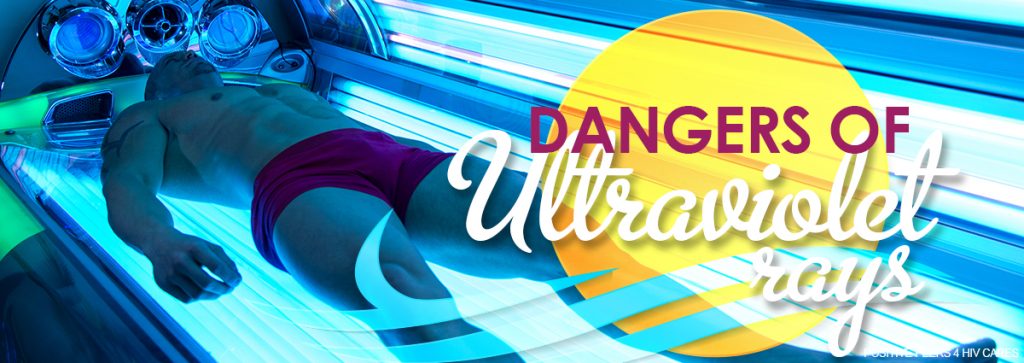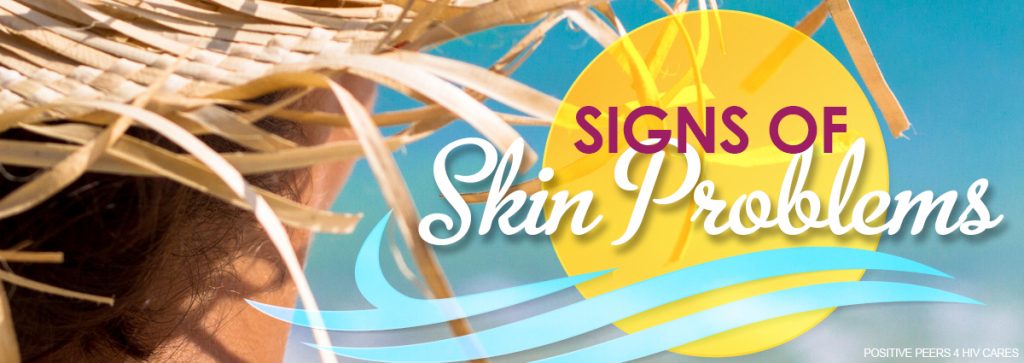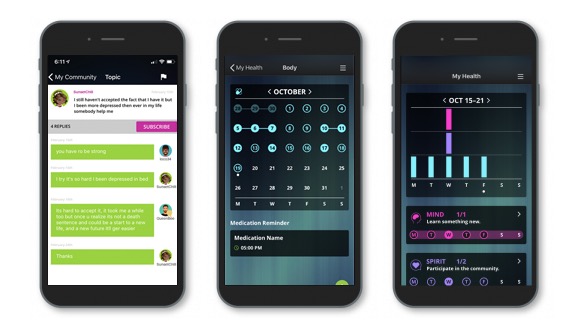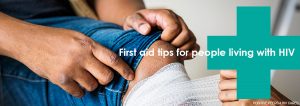
By: Jennifer McMillen Smith, LISW-S, HIV Social Worker at MetroHealth Medical Center and medically reviewed by Ann K. Avery, MD, Infectious Disease Physician at MetroHealth Medical Center
There’s nothing like getting some sunshine on a warm summer day. It feels so good that you can forget about taking steps to protect your skin.
If you’re living with HIV, it’s especially important to keep in mind both the sun’s benefits and hazards. After all, healthy skin is crucial to protecting your immune system! This doesn’t mean you can’t have any fun in the sun, it just means you want to defend yourself against the risks of solar radiation.

The danger of ultraviolet (UV) rays
The same sunlight that helps plants grow has a dark side for humans: ultraviolet (UV) radiation damages the skin and raises the risk of skin cancer. Two varieties — UVA and UVB — can age your skin and damage your eyes.
Also, it might be best to give up the tanning beds — they bombard the skin with UV rays. In fact, tanning beds can expose your skin to 50 times more UV radiation than the sun does. Yikes!

Not all exposure is dangerous
Every year scientists learn new things about sun exposure and what it does to the human body. But one thing is clear, not all levels of exposure are bad.
Sunburns, those are bad…always. Sunburns more than double your risk for melanoma while sunburn-free exposure can actually help you reduce your risk for melanoma.
Our understanding of the benefits of adequate sun exposure has grown rapidly in recent years. You might be familiar with one of the most important benefits of exposure, vitamin D!
This incredibly important hormone is produced by the body in response to UVB rays. The benefits of vitamin D are well known and include:
- Healthier bones
- Reduced risk of the flu
- Reduced risk of type 2 diabetes
- Cancer prevention
- Stronger immune system
- And much more!
Vitamin D is an important benefit of soaking up some sun, but it’s not the only one.
Sunshine has also been shown to increase levels of serotonin in the brain. Higher amounts of serotonin can help you combat depression, seasonal affective disorder (SADs), migraine headaches, Alzheimer’s, and more.
Come join our private, stigma-free, supportive community.
Health management tools with medication & appointment reminders.
Social networking in a community conversation & private chats.
Smart exposure to the sun
While getting some fun in the sun is proven to be beneficial, too much exposure to UVA and UVB rays from the sun can be equally as dangerous. So how do you find that sweet spot without getting too little or too much? The answer is, it depends.
Did you know, the amount of sun you need to get all the vitamin D your body wants (while avoiding sunburn) depends on the time of year, time of day, your latitude, and your skin type and melanin – or the natural pigment of your skin.
That’s a lot to think about! So, let’s keep it simple with these few tips:
- The best time to be outdoors is before 10 a.m. and after 2 p.m. The sun’s rays hit the earth most directly between those hours, but they hit at an indirect angle the rest of the day.
- You can wear a wide-brimmed hat and loose-fitting clothes that cover your skin.
- Applying sunscreen with an SPF of 30 or more every 90 minutes, particularly between the hours of 10am and 2pm is recommended to avoid sunburns.
- Also don’t forget your sunglasses. You’ll look cool, and you’ll keep your eyes protected and healthy.

UV rays and skin color
UV exposure causes the skin to darken. Darker skin also provides a bit more protection from the sun than light skin does.
But that doesn’t mean darker-skinned people are in the clear. African Americans, for instance, are somewhat less likely to get skin cancer than white people are, but there’s a catch. People with darker skin tones are more likely to be diagnosed with skin cancer in the later stages, so they have a lower survival rate.

Watch for signs of skin problems
Examine your skin from head to toe every month and keep an eye out for irregular spots or moles. Most moles are harmless, but sometimes they are skin cancer warning signs. Get at least one checkup a year with a dermatologist who can examine your skin.
For more tips, read this article from the experts at Cancer.org.
Related Blogs:


